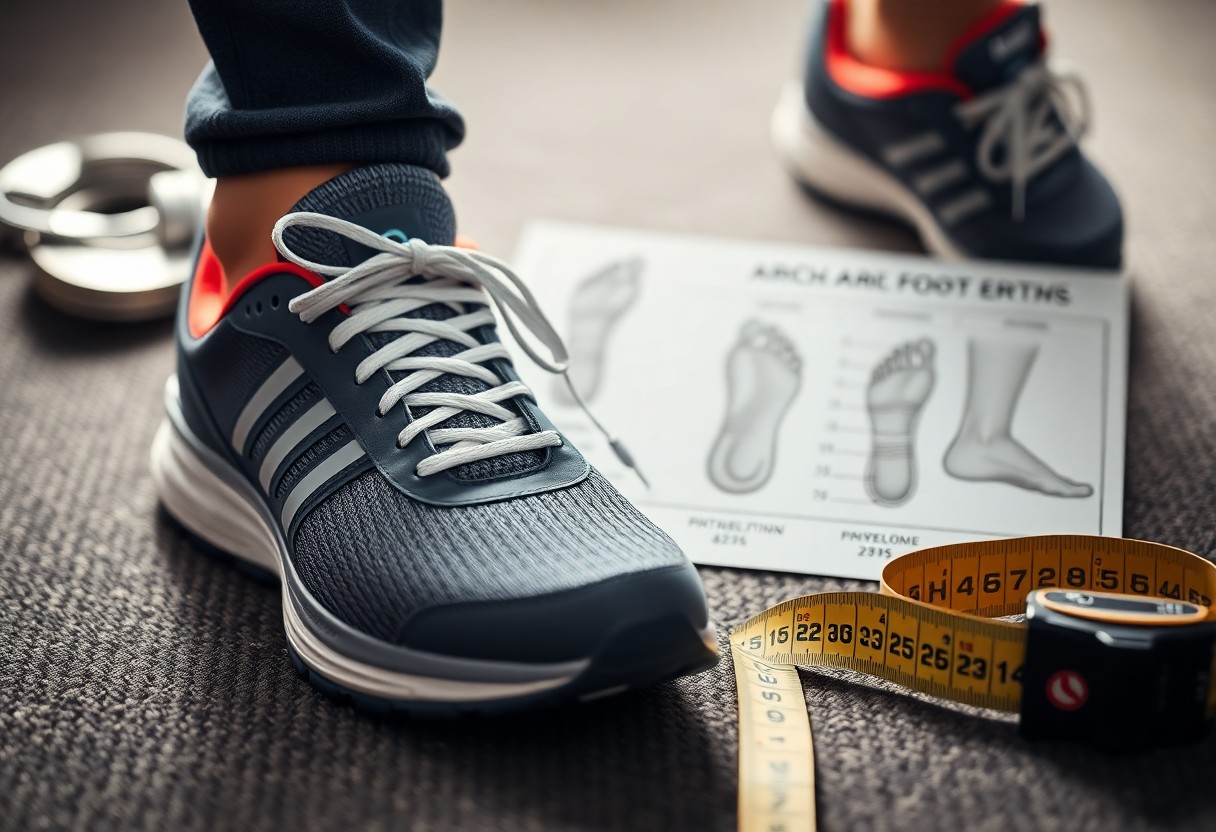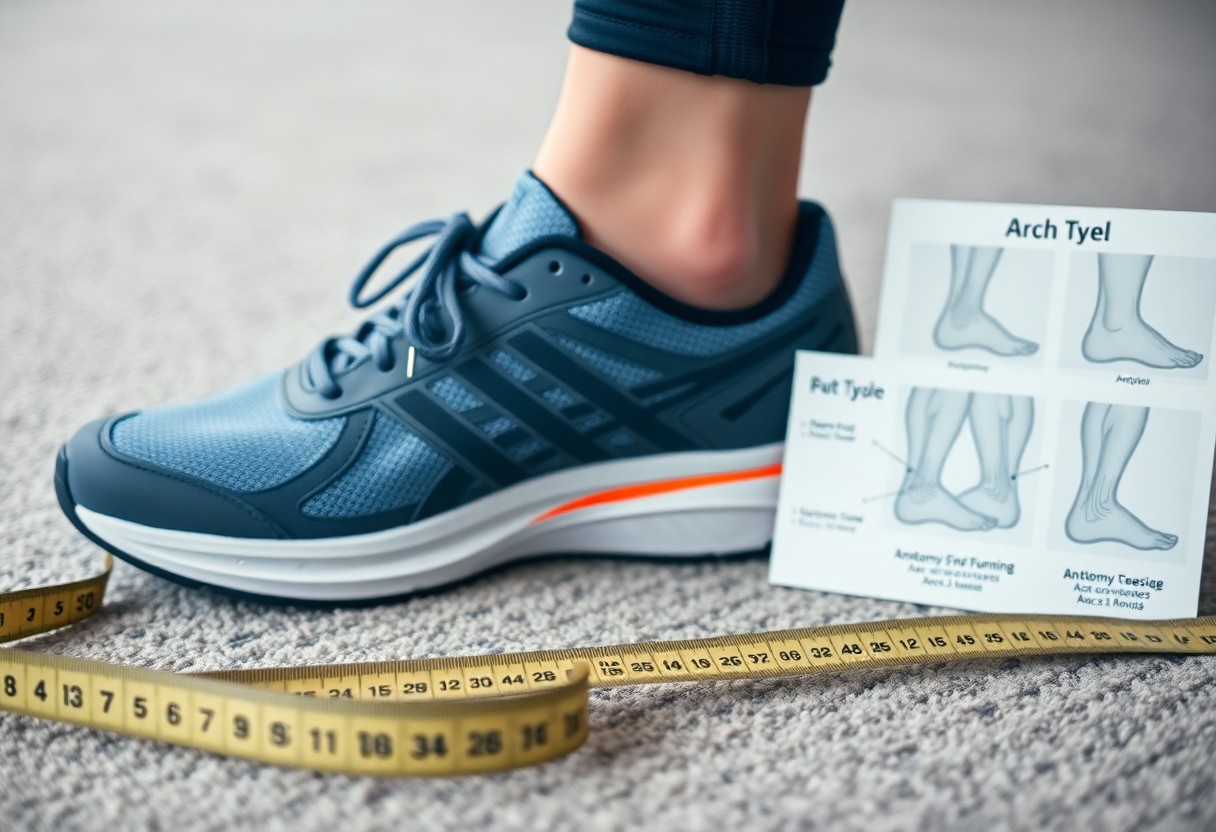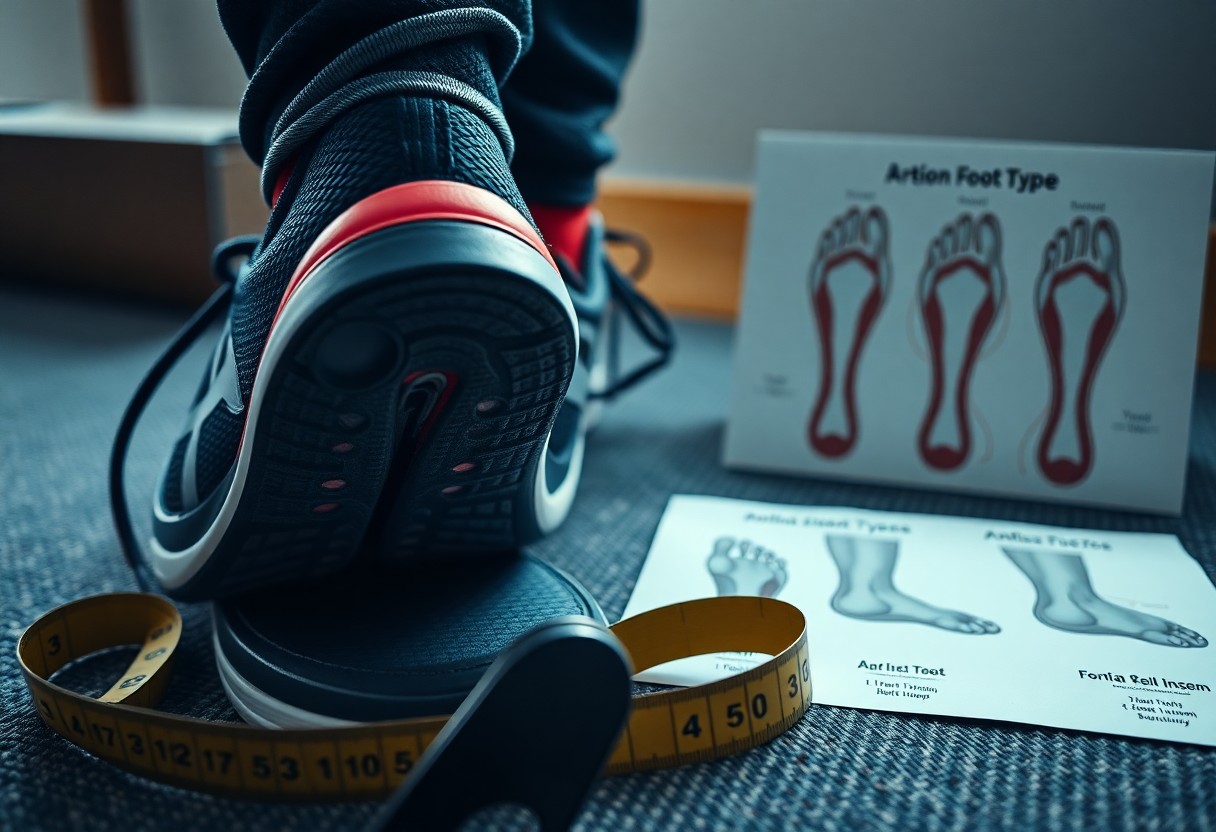Supporting your feet effectively goes beyond simply adding arch support to your shoes. Many may be surprised to learn that the majority of people do not actually need arch support in their footwear. Research indicates that abstaining from artificial arch support can strengthen your foot muscles over time. Relying on external support can lead to muscle atrophy, diminishing the natural strength of your feet. The human foot is naturally equipped with arches that adapt and flex according to the surfaces we walk on, and using rigid supports can hinder this natural motion, potentially leading to long-term foot health issues. This detailed article will explore the science behind arch support, empowering you to make informed choices for your foot health.

Exploring the Evolution and Historical Context of Arch Support in Footwear Design
The natural support system of the human foot has significantly influenced footwear design throughout history. The concept of arch support gained widespread attention in the 1920s when Dr. William Scholl introduced commercial orthotics, revolutionizing how people approached foot health. Before this innovation, individuals relied on the natural strength and flexibility of their feet. Understanding this historical backdrop highlights the evolution of our perception of foot health and underscores the importance of reevaluating contemporary footwear practices.
Transitioning from Traditional Footwear to Modern Practices: A Historical Perspective
The progression of footwear styles demonstrates that ancient cultures primarily wore simple, flat sandals or often went barefoot, which facilitated natural foot growth and strength. The feet of our ancestors were robust and flexible, thriving without artificial supports, as evidenced by studies on indigenous groups who continue to use traditional footwear. This historical insight illuminates the vital role of natural foot mechanics in ensuring foot health, revealing how modern footwear trends often neglect these foundational principles.
Evaluating the Influence of Contemporary Shoe Design on Overall Foot Health
By the mid-20th century, particularly in the 1950s, shoe manufacturers began to standardize built-in arch support as a common feature in footwear. Nowadays, a significant portion of modern shoes incorporates structured arch support, which has become a prevalent expectation despite limited scientific evidence for its universal necessity. This shift reflects changing consumer demands and industry standards. However, it also prompts a critical assessment of the implications such designs may have on foot health. With roughly 70% of footwear now containing arch support, it is essential to investigate whether this dependency on arch support is genuinely beneficial or potentially harmful.
Research published in the Journal of Foot and Ankle Research indicates that excessive dependence on arch support could lead to muscle weakness in the feet. As a result, many podiatrists are now recommending practices such as periodic barefoot walking and the use of minimally supportive shoes to help maintain natural foot strength and promote holistic foot health.

Understanding the Intricate Anatomy of the Human Foot
Despite the fact that your feet consist of 26 bones, 33 joints, and over 100 muscles, they function best when allowed to move freely. The arch of the foot is a self-sustaining structure, gaining strength through regular activity and becoming weakened when subjected to artificial support. Studies show that 75% of individuals who wear conventional shoes with arch support exhibit reduced foot muscle activity, which can lead to a decline in natural foot strength over time, emphasizing the necessity of allowing your feet to engage in their natural movements.
Recognizing the Advantages of Embracing Natural Foot Mechanics
The design of your foot is a remarkable example of biological engineering, featuring a complex system of self-support. Engaging in barefoot walking or wearing minimal shoes allows your feet to experience a full range of motion, enabling arches to flex and strengthen organically. Research indicates that people who frequently go barefoot or wear minimal shoes develop stronger foot muscles and more resilient arches compared to those who are reliant on supportive footwear. This finding underscores the importance of promoting natural movement for foot health, as it helps the body retain its structural integrity.
Effective Strategies for Boosting Foot Muscle Function and Development
Disruption of your foot’s natural movement can impede its growth and development. Your foot muscles thrive on regular engagement through natural activities to sustain their strength. Research published in Nature suggests that wearing shoes without arch support contributes to the development of stronger intrinsic foot muscles. This relationship emphasizes the importance of natural movement for optimal foot health, particularly for individuals experiencing discomfort or weakness in their feet.
Moreover, it's essential to recognize the consequences of wearing shoes with built-in arch support. Prolonged use of such footwear can lead to diminished engagement of foot muscles, resulting in potential weakness over time. Studies indicate that transitioning to minimal footwear can significantly increase foot muscle strength by up to 60% within eight weeks. However, it's important to approach this transition gradually, especially if you have existing foot conditions, to avoid injury and support a healthy adaptation process.
Examining Scientific Research and Evidence Supporting Foot Health
If you're interested in understanding the science behind arch support, numerous studies demonstrate that your feet can strengthen without artificial support. Various investigations reveal that natural foot movement enhances muscle development and improves arch stability, highlighting the critical role of biomechanics in foot health while also exposing the potential risks associated with an over-reliance on artificial supports.
Highlighting Key Scientific Studies on the Role of Arch Support
One of the most significant research findings includes a study published in Nature, which reveals that individuals who opt for minimal footwear exhibit foot muscles that are 50% stronger compared to those wearing traditional supportive shoes. This evidence reinforces the idea that regular movement and exercise enable your feet to maintain their arches naturally, further validating the importance of selecting appropriate footwear.
Comparing Footwear Choices Among Different Demographics
Contrasting Traditional Footwear Users with Minimal Footwear Users
| Users of Traditional Shoes | Users of Minimal Shoes |
| Exhibit higher prevalence of flat feet | Demonstrate enhanced arch strength |
| Show weaker foot muscles | Exhibit stronger foot muscles |
An extensive analysis of various populations reveals notable differences in foot health. Your foot structure can adapt significantly depending on the type of shoes you wear, underscoring the necessity for individuals to actively evaluate their footwear choices.
Insights from Global Population Studies
| Populations in Developed Countries | Barefoot Communities |
| 20% prevalence of flat feet | 3% prevalence of flat feet |
| Greater reliance on arch support | Maintain natural arch strength |

Exploring the Paradox of Support in Footwear Choices
Challenging commonly held beliefs, over-dependence on arch support in shoes can undermine your feet’s inherent strength. The human foot is intricately constructed with a sophisticated system of muscles, tendons, and ligaments that collaboratively provide natural support. When artificial arch support assumes this role, your foot muscles may become less active, resulting in gradual weakening and a decreased ability to perform daily activities effectively.
Understanding the Cycle of Dependency Associated with Arch Support
Continuous reliance on arch support creates a detrimental cycle. Your feet can become accustomed to external support, resulting in muscle atrophy. Research indicates that 70% of individuals who consistently use arch support report increased discomfort when walking without their supportive shoes, highlighting the development of this dependency that can adversely affect overall mobility and comfort.
Correlating Muscle Weakness with Excessive Use of Arch Support
Wearing shoes with built-in arch support could reduce the strength of your intrinsic foot muscles by up to 50%, as noted in findings published in Nature. This weakening compromises your feet’s natural arch support system and can lead to conditions such as flat feet and other foot-related problems. It’s crucial to understand that muscle weakness can extend beyond the feet; weakened foot muscles can negatively impact your overall posture and balance. Research suggests that individuals transitioning to minimal footwear often observe a 60% increase in foot muscle strength within six months, demonstrating the advantages of avoiding unnecessary supports.
Discovering Natural Alternatives for Improved Foot Health
For those seeking to move away from conventional arch support, various natural alternatives exist that can bolster foot strength. These methods focus on enabling your feet to function as intended, promoting the development of stronger foot muscles and more stable arches through natural movements and practices that prioritize foot health.
Adopting Minimalist Footwear for Enhanced Natural Movement
Minimalist shoes, featuring zero drop soles, spacious toe boxes, and flexible materials, encourage natural foot movement. These designs allow your feet to move freely, aiding in the maintenance of proper foot mechanics and fostering natural arch strength. Research indicates that regularly wearing minimal footwear can boost foot muscle strength by up to 60% through routine activities, reinforcing the significance of selecting the right footwear that aligns with your lifestyle.
Safe Strategies for Transitioning to Minimal Footwear
When considering a switch to minimalist footwear, it's essential to take a careful and gradual approach to ensure safety and comfort. Start by wearing minimal shoes for brief periods, gradually extending the duration over several weeks. This strategy helps prevent overuse injuries as your feet adapt to their newfound freedom, ensuring a smoother transition that promotes long-term foot health.
A successful transition should ideally be complemented by specific foot-strengthening exercises. Begin with 10-15 minutes per day in minimal shoes, adding 5-10 minutes each week. Incorporate exercises such as toe spreads and short barefoot walks on safe surfaces. This gradual approach minimizes the risk of common transition injuries while effectively building your natural arch strength, ultimately enhancing overall foot health.
Considering Individual Medical Factors for Optimal Foot Health
It is crucial to recognize that your foot health needs personalized attention. While natural foot movement is advantageous for muscle strength, certain medical conditions may require specific support. Factors such as your foot structure, activity level, and any pre-existing medical conditions will shape your ideal footwear needs, underscoring the importance of individualized evaluations.
Recognizing Specific Conditions That May Justify Arch Support
Contrary to popular belief, arch support is not universally necessary. However, individuals with acute injuries, severe flat feet, or specific medical conditions may indeed benefit from temporary or permanent arch support. Research shows that only 10-20% of the population genuinely requires specialized arch support for medical reasons, emphasizing the importance of tailored assessments to ensure optimal foot health.
Guidelines for Comprehensive Professional Foot Evaluations
To make informed decisions about your footwear, consulting a foot health professional is advisable. Comprehensive assessments should include gait analysis, evaluation of foot structure, and review of medical history. These elements are essential for determining whether you require arch support or if transitioning to minimal footwear is a viable option for your unique circumstances.
Support from a qualified professional can offer clarity and guidance throughout your foot health journey. A thorough assessment should encompass measuring arch flexibility, evaluating muscle strength, and analyzing walking patterns. Your healthcare provider should also consider your daily activities and any historical foot injuries to develop an effective treatment plan tailored to your specific needs and lifestyle.
Assessing Footwear Choices and Their Influence on Foot Health
Your footwear selection profoundly affects your foot health. It is now clear that most individuals do not need arch support and that reliance on such support may weaken foot muscles over time. Your feet possess a natural strength and flexibility, performing optimally when permitted to function as intended. If you're contemplating transitioning to minimal footwear, a gradual approach will assist your feet in adapting effectively. The evidence strongly suggests that allowing your feet to function without artificial support can lead to enhanced muscle strength and improved foot health for the majority. Always be conscious of your individual needs and consult a foot health professional for specific concerns regarding your foot health.
Common Inquiries About Arch Support and Foot Health
Is arch support essential for maintaining healthy feet?
Most healthy feet do not require arch support in shoes. Numerous studies indicate that the natural strength of the foot develops more effectively without artificial support. The muscles and arches of the foot perform optimally when allowed to operate naturally. This is consistent with research on populations that frequently walk barefoot or prefer minimal shoes, which demonstrate stronger foot muscles and fewer arch-related issues.
Can prolonged use of arch support lead to weakened feet?
Yes, extended reliance on arch support can result in weakened foot muscles. When artificial support replaces the function of foot muscles, these muscles become less engaged and gradually lose strength, creating a cycle of dependency. Research published in Nature indicates that individuals who consistently wear conventional shoes with arch support often exhibit weaker foot muscles compared to those who choose minimal footwear.
Who genuinely requires arch support in their footwear?
Certain individuals with specific foot conditions, injuries, or medical issues may indeed benefit from arch support. This includes those diagnosed with flat feet, particular injuries, or structural abnormalities. However, these situations should be evaluated by a foot health professional who can develop an appropriate treatment plan. The goal should be to restore natural foot function whenever possible, rather than imposing permanent support.
The Article Arch Support: Essential Facts About Shoe Necessities Was Found On https://limitsofstrategy.com
The Article Arch Support: Key Insights on Essential Shoe Needs First Appeared ON
: https://ad4sc.com














